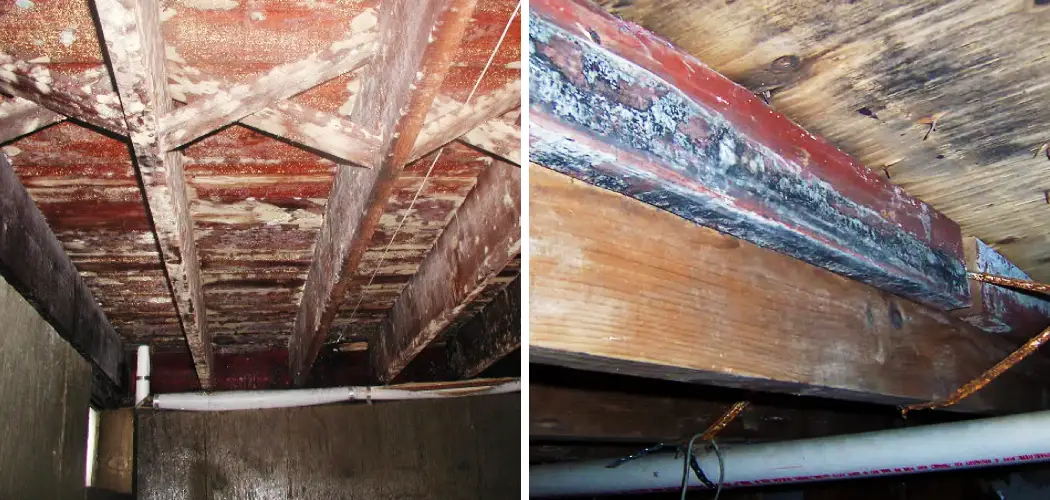Mold can cause significant damage to the structural integrity of your home if left untreated, making it essential to find ways to keep the area clean and dry. In this blog post, we’ll cover all the steps necessary for removing mold from wood beams in the basement. With our easy-to-follow tips and advice, you’ll be able to protect your home’s foundation from destructive fungi while ensuring its longevity!
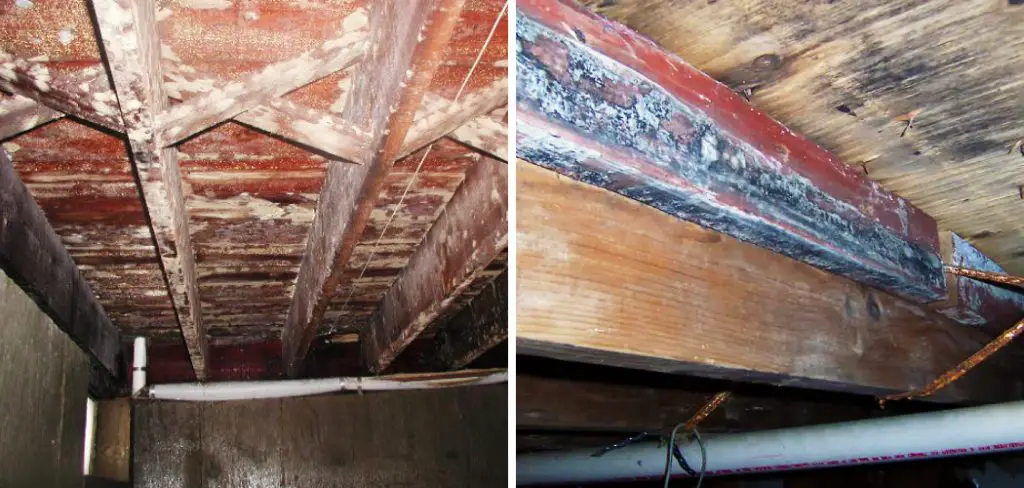
If you’re faced with the daunting task of removing mold from wood beams in your basement, don’t fret! Even though this can seem like a daunting job, there are steps and steps that you can take to make sure it’s done properly. From identifying the source of moisture to ensuring your safety while completing the job, these tips will help you learn how to remove mold from wood beams in basement so you get back to peace of mind as fast as possible.
Why is It Important to Remove Mold From Wood Beams in Basement?
1 . To Protect Your Health
Mold in the basement can cause serious health problems, such as respiratory issues and allergies. By removing mold from wood beams in your basement, you help reduce the risk of long-term health concerns.
2 . To Improve Air Quality
Mold spores are released into the air when they come into contact with moisture, which is common in basements. By removing mold from your wood beams, you can help improve the quality of the air in your home and reduce exposure to harmful spores.
3 . To Maintain Structural Integrity of Wood Beams
Mold growing on wood beams can weaken them over time and potentially cause structural damage. Removing mold from the wood will help maintain their structural integrity and prevent further damage.
4 . To Prevent Further Mold Growth
Mold needs moisture to grow, so removing the mold may also help reduce future growth. Make sure to address any sources of moisture in your basement that could be contributing to mold growth, such as leaky pipes or a humid environment.
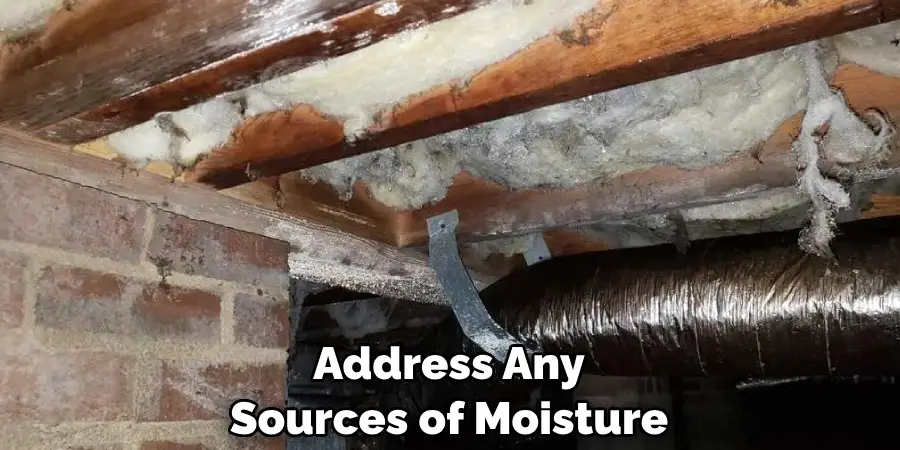
How to Remove Mold From Wood Beams in Basement in 6 Easy Steps
Step 1: Prepare the Area
Before you begin removing mold from wood beams in your basement, make sure to take precautions to keep yourself safe. Put on protective gear, such as a respirator or goggles, and open windows for ventilation. It’s also important to turn off any fans or air conditioners before beginning the removal process.
Step 2: Identify the Source of Moisture
Mold needs moisture to grow, so it’s important to identify and address any sources of moisture that may be contributing to its growth. Look for signs such as a damp basement or leaky pipes and take steps to fix these issues.
Step 3: Clean the Area
Before you begin removing mold from wood beams, it’s important to thoroughly clean the area. Vacuum and sweep up any dust and debris, then scrub down the affected area with a mild soap or detergent solution. This will remove dirt and other particles that may be contributing to mold growth.
Step 4: Remove Mold From Wood Beams
Once the area is clean, you can begin removing mold from wood beams in your basement. Start by scrubbing with a soft-bristled brush and a mild detergent solution to loosen and remove any visible mold.
Step 5: Dry Out the Area
After removing the mold, it’s important to thoroughly dry out the area. Use a dehumidifier to reduce the humidity levels in your basement and make sure to open windows for ventilation.
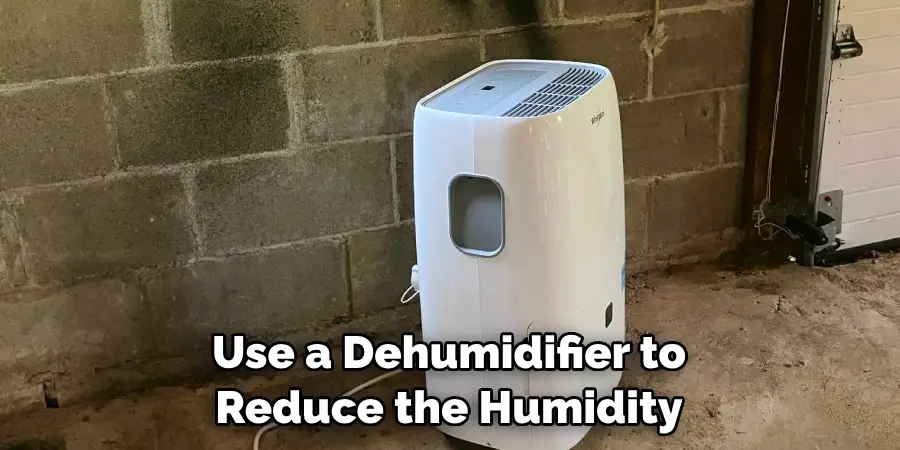
Some Extra Tips to Remove Mold From Wood Beams in Basement
1 . Do Not Use Bleach
It is important to remember that bleach should not be used on wood beams as it can cause discoloration and damage. It is also ineffective in killing the mold spores deep within the wood, so alternative solutions should be used.
2 . Clean Regularly
Regular cleaning of your basement and the wooden beams is essential to prevent the growth of mold. Vacuum any dust and debris that accumulates on a regular basis, and use an air purifier to keep your basement free from dust, dirt, and other particles that can contribute to mold growth.
3 . Improve Ventilation
Poor ventilation in your basement can lead to moisture retention which will encourage the growth of mold. Make sure that there is adequate ventilation in your basement, using fans or open windows to keep air circulating and discourage the growth of mold.
4 . Keep Humidity Levels Low
High levels of humidity can cause moisture to accumulate on surfaces, which makes them a perfect breeding ground for mold spores. To reduce humidity levels in your basement, use a dehumidifier to remove excess moisture from the air.
5 . Check for Leaks
If you notice any signs of a leak in your basement, it is important to repair them so that the mold spores do not have access to more moisture. This will help prevent mold and mildew from coming back in the future.
6 . Maintain Your Basement
Regular maintenance of your basement and the wood beams is key to preventing mold from coming back. Make sure that all moisture sources are eliminated, including any leaks or high humidity levels. Clean regularly and make sure that the area remains dry and free from dust and debris.
7 . Use a Mildewcide
Once you have removed the mold from your wood beams, using a mildewcide can help prevent it from growing back. A mildewcide works to kill off any remaining spores and reduce the chances of more mold developing in the future.
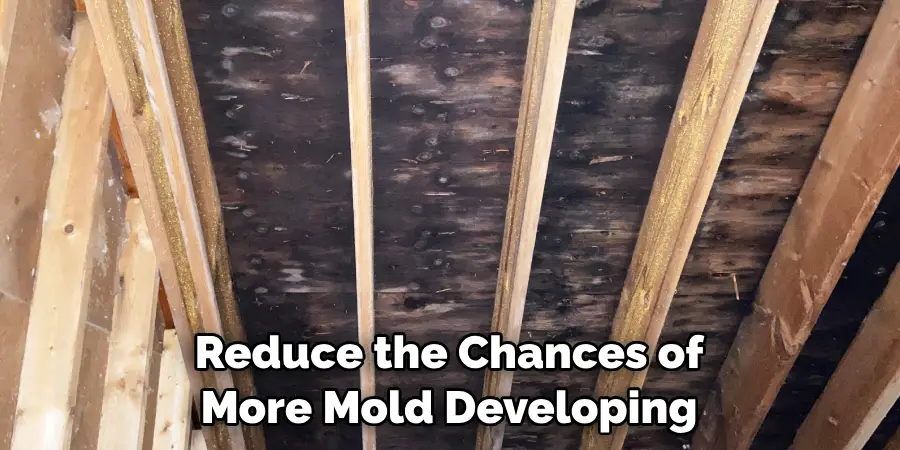
8 . Consider Professional Help
If the problem persists or if there is extensive damage to your wooden beams, it is important to consider seeking professional help. A mold removal specialist can assess the situation and provide safe and effective solutions to ensure that your basement remains clean and free from mold.
Following these tips will help you remove any existing mold in your basement, as well as prevent it from coming back in the future. With regular maintenance and cleaning, you can ensure a healthy and mold-free environment for you and your family.
Frequently Asked Questions
What Precautions Should I Take Before Removing Mold From Wood Beams?
Before attempting to remove mold from wood beams in your basement, you should always take the necessary safety precautions. Wear protective gear such as goggles, gloves, and a mask to protect yourself from the mold spores. Make sure to use a disposable respirator when working with mold or mildew and dispose of it afterwards. Also, open all the windows in the room to provide adequate ventilation.
How Can I Tell If Mold Is Present On The Wood Beams?
Mold and mildew on wood beams can be identified by their discoloration or musty smell. You may also see a black, grey, or greenish colored residue that is slightly fuzzy in texture. If the wood beams are still covered in paint, mold can still be present and you may need to do a more thorough inspection for it.
What Is The Best Way To Remove Mold From Wood Beams?
When removing mold from wood beams, always begin with a mild detergent solution and a soft brush or cloth. Use this to gently scrub away the mold and mildew, taking care not to spread the spores. After this is done, you can use a stronger solution if needed. A mixture of bleach and water (1:3 ratio) or vinegar and water (1:2 ratio) should be sufficient for removing stubborn mold. Be sure to rinse off the area afterwards with clean water.
What Is The Best Way To Prevent Mold From Growing On Wood Beams?
The best way to prevent mold from growing on wood beams is to keep the area clean and dry. Make sure all leaks and moisture problems are fixed and that any standing water is quickly removed. Keep ventilation in mind as well, especially in humid or damp areas such as basements. You should also use a dehumidifier and use fans for proper air circulation.
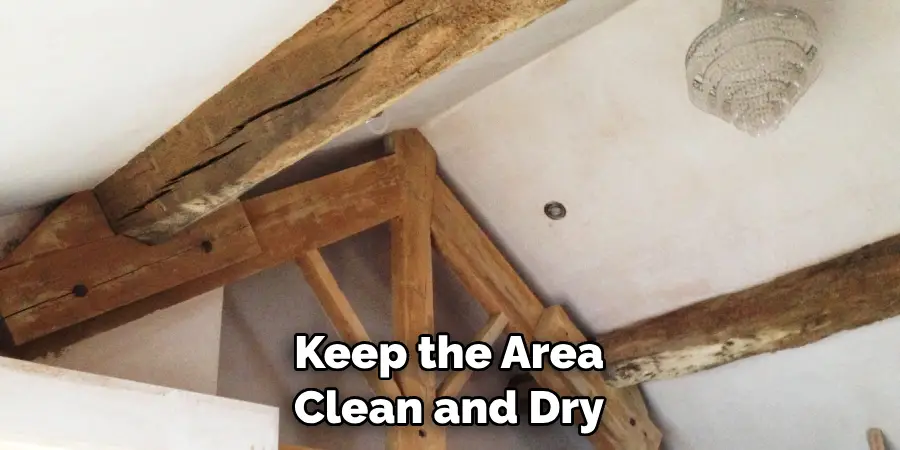
Additionally, check the wood beams periodically for any signs of mold growth to catch it early before it becomes too much of a problem. Keeping up with regular maintenance will help prevent future mold growth and keep your home safe.
What Other Areas Can Mold Grow In My Basement?
In addition to wood beams, mold can also grow on other surfaces in basements such as walls, floors, and ceilings. It can also grow on furniture, clothing, carpets, and other items that are stored in the basement. To prevent mold from growing on these surfaces, keep them clean and dry just as you would with wood beams. If any leaks or moisture issues occur, make sure to address them quickly to avoid any future mold growth.
Conclusion
To ensure a safe and successful mold removal process from wood beams in the basement, it is paramount that individuals follow the steps discussed in this blog post. Proper safety precautions must also be taken; if an individual notices any signs of sensitivity to the mold spores, they should immediately contact a medical professional or mold remediation specialist to help safely remove the mold.
Now you know how to remove mold from wood beams in basement! While removing mold can be time consuming and costly, taking such steps will ultimately benefit everyone involved.
Not only will it protect inhabitants from potential health hazards, but it can also prolong the life of your home’s wood beams and areas where mold spores linger. By heeding the warnings and tips offered within this blog post, you can confidently make sure your basement remains free and clear of any destructive molds.

